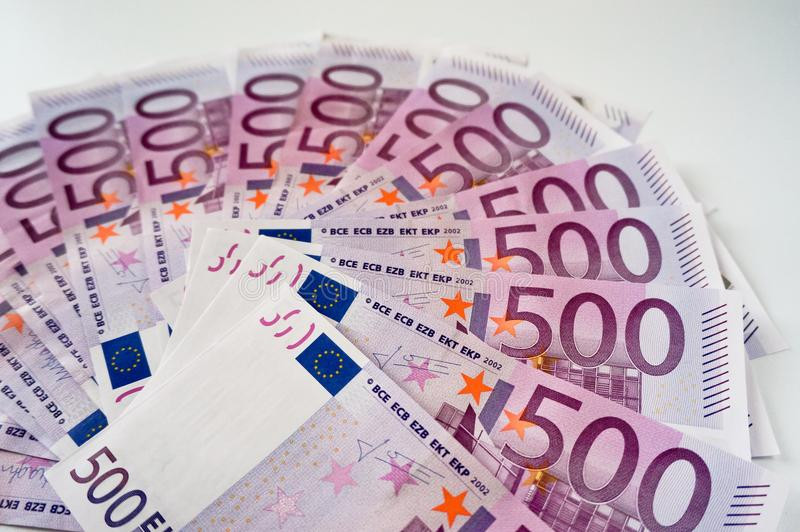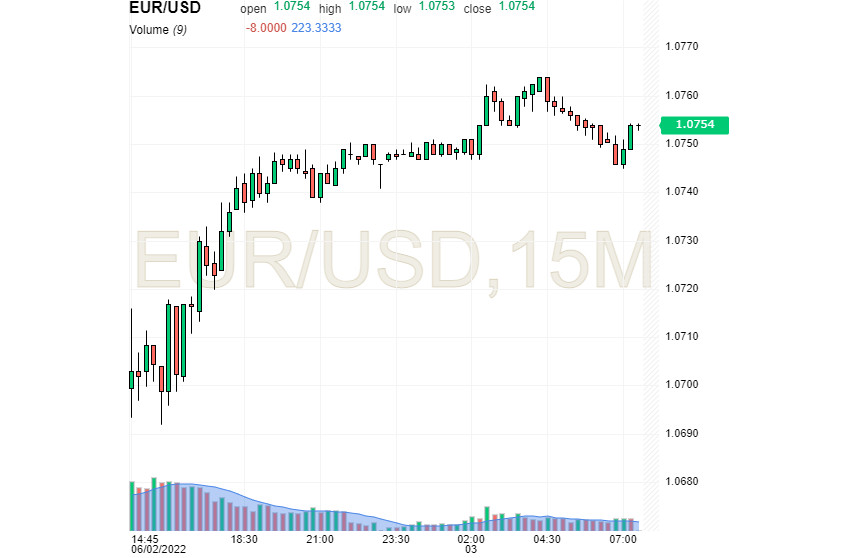
The European currency is ending the week in positive territory ahead of the US dollar. Now, EUR has to hold its position. After several straight days of gains, the American currency has retreated due to mixed macroeconomic data.
USD reversed downwards late on Thursday, June 2, following the release of US labor market data, which is one of the Fed's key economic gauges. According to ADP's payroll data, only 128,000 new jobs were created in the US private sector, well below the forecasted increase by 300,000. Over the past week, the number of initial jobless claims declined by 11,000 to 200,000.
According to the US Labor Department, unit labor costs in the first quarter of 2022 reached an upwardly revised 12.6% QoQ. Originally, labor costs increased by 11.6%. The data release indicated a higher than expected wage pressure. The US dollar index reversed downwards on Thursday after its earlier spike and reached an intraday low late on Thursday.
This situation has undermined USD, giving support to EUR. Early on Friday, the US dollar remained volatile due to the US labor market data. Market players assessed laber market data to predict the Fed's interest rate trajectory. EUR/USD traded near 1.0754, recovering most of its earlier losses.

Throughout the week, EUR was under pressure from weak macroeconomic data in the eurozone. According to Eurostat, EU CPI increased by 8.1% in May. Economists expected inflation to reach 7.6%. The inflation surge was fuelled by spiraling oil prices, the escalation of the conflict in Ukraine, and a possible embargo on Russian oil. Market players are anxious that expanded sanctions against the Russian energy sector could send consumer prices even higher and throw the economy into chaos.
Galloping inflation gives the European regulator a good reason for launching its own tightening cycle. Market players are sure that existing measures are not enough to bring inflation down to the target level of 2%. The ECB's indecisiveness is fuelled by a lack of consensus within the ECB on rate hikes. Earlier, Francois Villeroy de Galhau stated that inflation in the eurozone is too strong and too broad, requiring a normalization of monetary policy.
Many analysts believe the USD rally of the past couple of days is about to end, though some see the greenback go into a reversal. While the US dollar is trading near a 20 year high, the situation could still change. Investors have already priced in all possible factors, such as quantitative easing and an interest rate hike.
The US dollar has recovered the losses it had sustained in early May. However, it is currently on the back foot, compared to the euro. Mixed US macroeconomic data are exacerbating the situation - the labor market is tight and experiences fluctuations. Investors today are focusing on US labor market data. According to preliminary estimates, unemployment in the US decreased to 3.5% in May from 3.6% in the previous month.
Despite bouts of turbulence, the US economy remains stable, giving extra support to USD, helping the US currency stay afloat and outperform EUR.
 English
English 
 Русский
Русский Bahasa Indonesia
Bahasa Indonesia Bahasa Malay
Bahasa Malay ไทย
ไทย Español
Español Deutsch
Deutsch Български
Български Français
Français Tiếng Việt
Tiếng Việt 中文
中文 বাংলা
বাংলা हिन्दी
हिन्दी Čeština
Čeština Українська
Українська Română
Română

